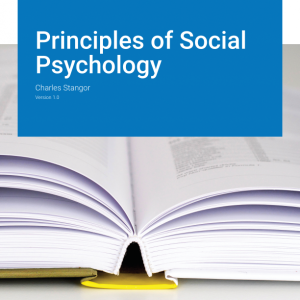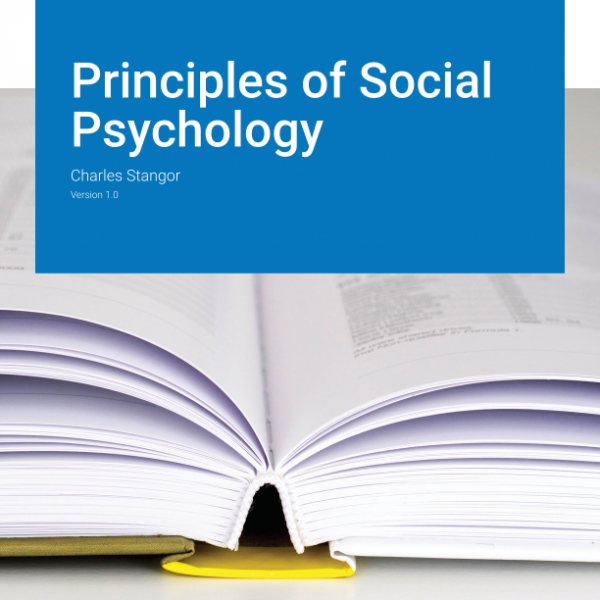Test Bank for Principles of Social Psychology Version 1.0 by Stangor
$35.00 Original price was: $35.00.$26.50Current price is: $26.50.
Test Bank for Principles of Social Psychology Version 1.0 by Stangor
Instant download Test Bank for Principles of Social Psychology Version 1.0 by Stangor pdf docx epub after payment.

Product details:
ISBN (Digital): 978-1-4533-2963-4
Author: Charles Stangor
To help students better grasp the big picture of social psychology, and to provide you with a theme that you can use to organize your lectures, Dr. Stangor’s text has a consistent pedagogy across the chapters. The presentation is organized around two underlying principles that are essential to social psychology:
– Person and Situation (the classic treatment)
– The ABCs of social psychology (Affect, Behavior, and Cognition)
The author believes these dimensions are fundamental, that they are extremely heuristic, and that they are what he hopes your students (and his) will learn and remember. You may find that this organization represents a more explicit representation of what you’re already doing in your lectures. Although the pedagogy is consistent, it is not constraining. You can and will use these dimensions more in some lectures than in others, and you will find them more useful for some topics than others. But they will always work for you when you are ready for them.
Perhaps most important, a focus on these dimensions helps us bridge the gap between the textbook, the real-life experiences of our students, and our class presentations. It is almost impossible to can’t cover every phenomenon in your lectures – you can naturally let the textbook fill in the details. The goal of Principles of Social Psychology is to allow you to rest assured that the text has provided your students with the foundations– the fundamental language of social psychology – from which you can build as you see fit. And when you turn to ask students to apply their learning to real life, you can know that they will be doing this as social psychologists do – using a basic underlying framework.
Table of contents:
Chapter 1: Introducing Social Psychology
- 1.1 Defining Social Psychology: History and Principles
- 1.2 Affect, Behavior, and Cognition
- 1.3 Conducting Research in Social Psychology
- 1.4 Chapter Summary
Chapter 2: Social Learning and Social Cognition
- 2.1 Sources of Social Knowledge
- 2.2 How We Use Our Expectations
- 2.3 Thinking Like a Social Psychologist About Social Cognition
- 2.4 Chapter Summary
Chapter 3: Social Affect
- 3.1 Moods and Emotions in Our Social Lives
- 3.2 Emotions, Stress, and Well-Being
- 3.3 How to Feel Better: Coping With Negative Emotions
- 3.4 Thinking Like a Social Psychologist About Social Affect
- 3.5 Chapter Summary
Chapter 4: The Self
- 4.1 The Cognitive Self: The Self-Concept
- 4.2 The Feeling Self: Self-Esteem
- 4.3 The Social Self: The Role of the Social Situation
- 4.4 Thinking Like a Social Psychologist About the Self
- 4.5 Chapter Summary
Chapter 5: Attitudes, Behavior, and Persuasion
- 5.1 Exploring Attitudes
- 5.2 Changing Attitudes Through Persuasion
- 5.3 Changing Attitudes by Changing Behavior
- 5.4 Thinking Like a Social Psychologist About Attitudes, Behavior, and Persuasion
- 5.5 Chapter Summary
Chapter 6: Perceiving Others
- 6.1 Initial Impression Formation
- 6.2 Inferring Dispositions Using Causal Attribution
- 6.3 Individual and Cultural Differences in Person Perception
- 6.4 Thinking Like a Social Psychologist About Person Perception
- 6.5 Chapter Summary
Chapter 7: Influencing and Conforming
- 7.1 The Many Varieties of Conformity
- 7.2 Obedience, Power, and Leadership
- 7.3 Person, Gender, and Cultural Differences in Conformity
- 7.4 Thinking Like a Social Psychologist About Conformity
- 7.5 Chapter Summary
Chapter 8: Liking and Loving
- 8.1 Initial Attraction
- 8.2 Close Relationships: Liking and Loving Over the Long Term
- 8.3 Thinking Like a Social Psychologist About Liking and Loving
- 8.4 Chapter Summary
Chapter 9: Helping and Altruism
- 9.1 Understanding Altruism: Self and Other Concerns
- 9.2 The Role of Affect: Moods and Emotions
- 9.3 How the Social Context Influences Helping
- 9.4 Other Determinants of Helping
- 9.5 Thinking Like a Social Psychologist About Altruism
- 9.6 Chapter Summary
Chapter 10: Aggression
- 10.1 Defining Aggression
- 10.2 The Biological and Emotional Causes of Aggression
- 10.3 The Violence Around Us: How the Social Situation Influences Aggression
- 10.4 Personal and Cultural Influences on Aggression
- 10.5 Thinking Like a Social Psychologist About Aggression
- 10.6 Chapter Summary
Chapter 11: Working Groups: Performance and Decision Making
- 11.1 Understanding Social Groups
- 11.2 Group Process: The Pluses and Minuses of Working Together
- 11.3 Improving Group Performance
- 11.4 Thinking Like a Social Psychologist About Social Groups
- 11.5 Chapter Summary
Chapter 12: Stereotypes, Prejudice, and Discrimination
- 12.1 Social Categorization and Stereotyping
- 12.2 Ingroup Favoritism and Prejudice
- 12.3 Reducing Discrimination
- 12.4 Thinking Like a Social Psychologist About Stereotyping, Prejudice, and Discrimination
- 12.5 Chapter Summary
Chapter 13: Competition and Cooperation in Our Social Worlds
- 13.1 Conflict, Cooperation, Morality, and Fairness
- 13.2 How the Social Situation Creates Conflict: The Role of Social Dilemmas
- 13.3 Strategies for Producing Cooperation
- 13.4 Thinking Like a Social Psychologist About Cooperation and Competition
- 13.5 Chapter Summary
People also search:
Principles of Social Psychology Version 1.0
Principles of Social Psychology Version 1.0 pdf
Principles of Social Psychology
Related products
Test Bank
Test Bank for Decision Support and Business Intelligence Systems, 9th Edition: Efraim Turban
Test Bank
Test Bank for Clinical Immunology and Serology A Laboratory Perspective, 3rd Edition: Stevens












